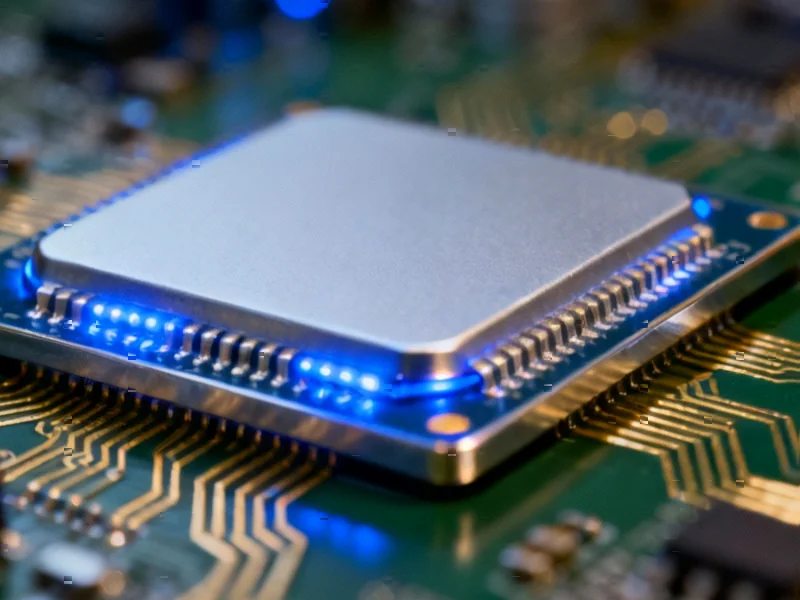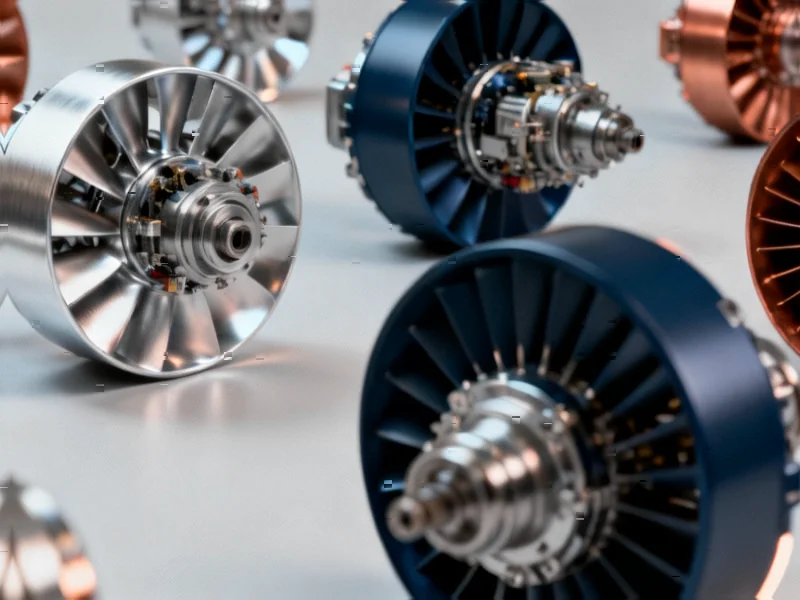Strategic Adaptation to Export Controls
According to industry analysis, China’s semiconductor industry is developing creative responses to American export restrictions that have limited access to advanced chipmaking technology. The restrictions, which began in 2018 under the Trump administration and continued through the Biden presidency, were reportedly intended to hinder China’s development of an advanced domestic chip industry. Instead, sources indicate these measures have accelerated Chinese innovation efforts as companies seek technological self-sufficiency.
Table of Contents
Bridging the Performance Gap
Data collected by Ryan Cunningham of Edgerunner Ventures suggests Chinese chips currently lag behind American competitors in raw performance. The analysis reportedly shows median Chinese chip performance at 114 teraflops compared to significantly higher numbers for US products. Huawei’s flagship Ascend 910 chip delivers 800 teraflops, while Nvidia’s H200 reaches 2,500 teraflops, according to the findings.
Analysts suggest this performance gap stems from manufacturing limitations. Only three companies worldwide—Samsung Semiconductor, TSMC, and Intel—can produce chips with the smallest transistors, with TSMC dominating the market. Due to American pressure, reports indicate TSMC’s most advanced factories remain inaccessible to Chinese customers, forcing reliance on domestic manufacturers like SMIC and Huawei’s own fabrication plants.
Pushing Existing Technology to Its Limits
The report states that Chinese chipmakers are maximizing older technology since they cannot access the most advanced equipment. Lithography machines, which use light to etch circuit patterns onto silicon wafers, represent a particular challenge. The most advanced extreme-ultraviolet (EUV) machines from Dutch company ASML use 13.5nm wavelength light and remain unavailable to Chinese firms due to export controls.
Instead, analysts suggest Chinese manufacturers are pushing older deep ultraviolet (DUV) systems, which use 193nm light, beyond their intended capabilities through techniques like multi-patterning. This process involves exposing wafers to light sources multiple times to create smaller features than possible with single exposure. While this approach allows for more advanced chip production, sources indicate it also increases costs, slows production, and reduces yield rates.
Compensating Through Scale and Architecture
Where China trails in chip quality, reports indicate companies are pursuing quantity and innovative architecture. Huawei’s recently announced CloudMatrix 384 system connects 384 Ascend 910 chips together, designed to compete with Nvidia’s HGX H200 system containing 72 H200 chips. Analysis from consultancy SemiAnalysis suggests each Ascend chip has approximately one-third the performance of an H200, but using over five times as many chips gives Huawei’s system nearly double the performance of Nvidia’s offering.
This approach reportedly comes with a significant trade-off in power consumption, with the Huawei system using over four times more electricity than Nvidia’s equivalent. However, analysts suggest energy efficiency is considered a secondary concern in China’s current strategic calculations.
Hardware-Software Integration
China’s strategy reportedly includes closely tailoring hardware to the software running on it, particularly for AI applications. According to technical experts, AI models can tolerate mathematical imprecision, allowing for optimization through reduced numerical precision. Many modern AI chips represent numbers with just 16, 8, or even 4 bits instead of the 32 or 64 bits used in general-purpose processors.
Chinese firm DeepSeek, which recently released a competitive AI model, has developed a new numbering format that stores numbers in eight bits without distinguishing between positive and negative numbers and lacking fractional components. While this approach limits numerical range and precision, analysts suggest it offers significant efficiency gains. Reports indicate Chinese chip designer Cambricon Technologies saw stock surges after DeepSeek’s announcement, as its processors already support the format.
Remaining Challenges
Despite progress, analysts suggest China’s domestic technology stack still faces significant hurdles. Nvidia’s CUDA programming tools remain dominant in AI development, and Chinese designers reportedly still rely on American electronic design automation software from companies like Synopsys and Cadence. Although America temporarily banned these exports to China in May before relenting in July, the dependence highlights ongoing vulnerabilities.
Additionally, while Chinese chips are reportedly closing the gap in AI inference—where models respond to user queries—they remain weaker in the training phase that creates AI models. Training requires massive data movement between processors and memory, and advanced memory chips represent another component where America has sought to restrict China’s access.
Industry observers note that if computing and AI are considered vital for national security, China’s semiconductor industry doesn’t need to be the world’s best to serve its purposes. Hardware that is merely competitive could satisfy many strategic needs. Official Chinese responses to continued American restrictions suggest growing confidence in domestic alternatives, with recent government statements urging tech firms to abandon Nvidia products entirely in favor of homegrown solutions.
Related Articles You May Find Interesting
- Windows 11 Enhances Click to Do with AI-Powered Copilot Integration for Translat
- Apple’s Cross-Platform Data Migration Framework Bridges iOS-Android Divide
- Windows 11’s File Explorer Evolves: AI-Powered Recommendations and Enhanced Inte
- Beyond the Hype: Unpacking Apple’s M5 Chip Evolution in the Context of Its Prede
- Samsung Enters Mixed Reality Arena with $1799 Galaxy XR Powered by Android XR Pl
References & Further Reading
This article draws from multiple authoritative sources. For more information, please consult:
- http://en.wikipedia.org/wiki/Transistor
- http://en.wikipedia.org/wiki/FLOPS
- http://en.wikipedia.org/wiki/Huawei
- http://en.wikipedia.org/wiki/Software
- http://en.wikipedia.org/wiki/Donald_Trump
This article aggregates information from publicly available sources. All trademarks and copyrights belong to their respective owners.
Note: Featured image is for illustrative purposes only and does not represent any specific product, service, or entity mentioned in this article.



